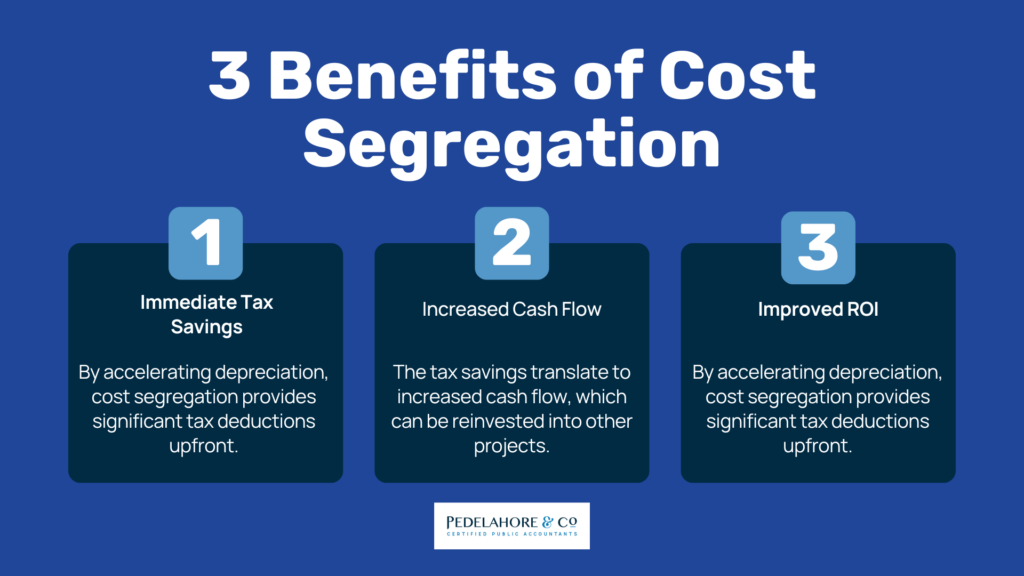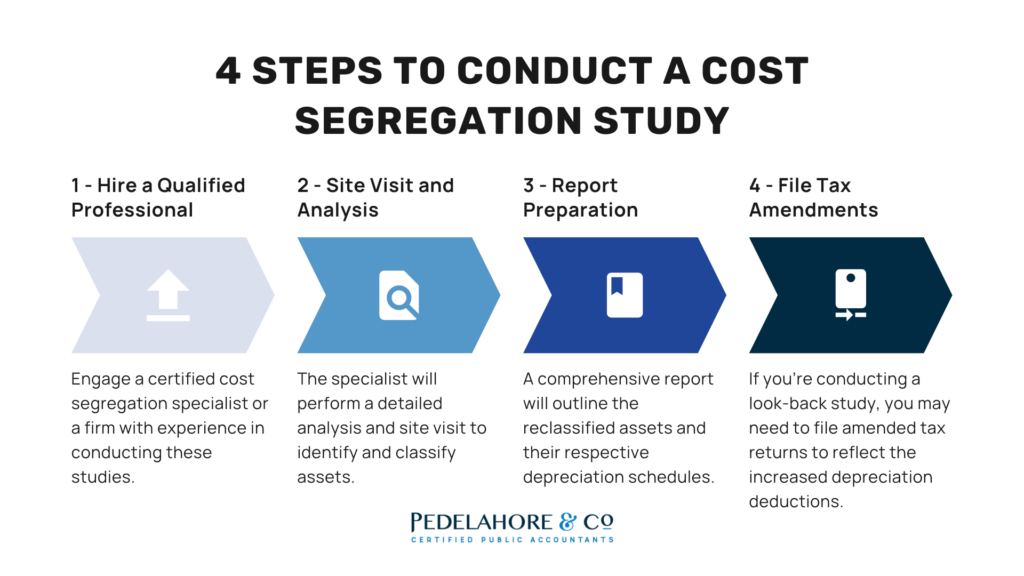In the world of real estate investment, maximizing returns is the name of the game. One strategy that savvy investors use is cost segregation, a powerful tax-saving tool. But what is cost segregation, and is it right for you? If you’re a property owner or real estate investor, understanding cost segregation can significantly enhance your financial outcomes. This article will walk you through cost segregation, its benefits, and how to apply it to your properties for optimal tax savings.
Table of Contents
What Is Cost Segregation?
Cost segregation is a strategic tax planning tool that allows property owners to accelerate depreciation deductions on certain components of their property. Instead of depreciating the entire property over the standard 27.5 years for residential rentals or 39 years for commercial properties, cost segregation separates the property into different components, each with a shorter depreciation period.
How It Works
Cost segregation involves identifying and reclassifying personal property assets and land improvements that can be depreciated over a shorter period—typically 5, 7, or 15 years. This reclassification yields higher depreciation deductions in the early years of property ownership, which in turn reduces taxable income.

3 Benefits of Cost Segregation
- Immediate Tax Savings: By accelerating depreciation, cost segregation provides significant tax deductions upfront.
- Increased Cash Flow: The tax savings translate to increased cash flow, which can be reinvested into other projects.
- Improved ROI: Enhanced cash flow and tax savings improve the overall return on investment (ROI) of your property.
Key Areas for Cost Segregation
Personal Property
Items within the property, such as appliances, carpeting, and fixtures, can be classified as personal property, which has a much shorter depreciation period compared to the building structure.
Land Improvements
Improvements to the land, such as landscaping, parking lots, and fencing, are also eligible for accelerated depreciation.
Building Components
Certain components of the building, like specialized electrical and plumbing systems, may qualify for shorter depreciation periods.
When to Conduct a Cost Segregation Study
The best time to perform a cost segregation study is when you purchase, construct, or remodel a property. However, if you haven’t done it in the past, you can conduct a “look-back” study to catch up on missed depreciation from previous years.

4 Steps to Conduct a Cost Segregation Study
- Hire a Qualified Professional: Engage a certified cost segregation specialist or a firm with experience in conducting these studies.
- Site Visit and Analysis: The specialist will perform a detailed analysis and site visit to identify and classify assets.
- Report Preparation: A comprehensive report will outline the reclassified assets and their respective depreciation schedules.
- File Tax Amendments: If you’re conducting a look-back study, you may need to file amended tax returns to reflect the increased depreciation deductions.
Potential Pitfalls and Considerations
Passive Loss Limitations
If you have passive loss limitations, accelerated depreciation might not be fully deductible in the current year. However, unused losses can be carried forward to future years.
Recapture Tax
When you sell the property, you may have to pay recapture tax on the accelerated depreciation, which could offset some of the benefits. It’s crucial to consider your long-term plans for the property.
Cost of the Study
Conducting a cost segregation study can be expensive. However, the tax savings typically outweigh the cost, especially for larger properties.
Success Stories
Case Study 1
John, a real estate investor, purchased a commercial property for $2 million. By conducting a cost segregation study, he was able to reclassify $500,000 of the property into 5, 7, and 15-year assets. This resulted in an additional $100,000 depreciation deduction in the first year, saving him $35,000 in taxes.
Case Study 2
Sarah acquired a residential rental property for $1.5 million. Through cost segregation, she identified $300,000 in personal property and land improvements. The accelerated depreciation provided her with $60,000 in additional deductions, enhancing her cash flow significantly.
Tools and Resources
IRS Guidelines
Refer to the IRS guidelines on cost segregation to understand the legal framework and compliance requirements.
Professional Services
Several firms specialize in cost segregation studies. Engaging a reputable firm ensures accurate classification and maximizes your tax benefits. Contact Pedelahore Today!

Conclusion: What is cost segregation?
Cost segregation is a potent tool for real estate investors seeking to maximize their tax savings and improve cash flow. By accelerating depreciation on certain property components, you can achieve significant financial benefits. If you’re ready to explore cost segregation for your property, consider consulting with a qualified professional to conduct a study.
Final Thoughts
Understanding and implementing cost segregation can be a game-changer for your real estate investments. The upfront tax savings and improved cash flow provide a solid foundation for future growth and expansion. If you’re interested in learning more about how cost segregation can benefit your portfolio, reach out to our team of experts today.
Ready to accelerate your tax savings? Learn more about cost segregation and how it can work for you.

